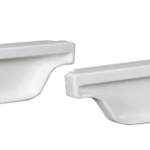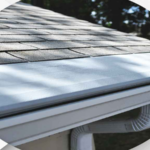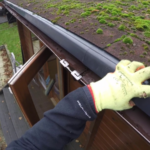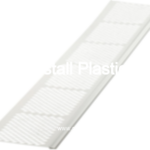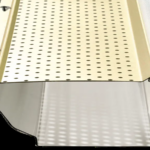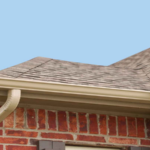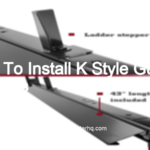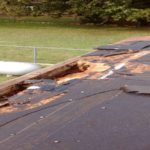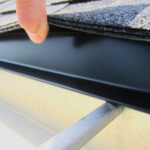- Begin by measuring the length of the area you wish to install your gutters. Add an extra 10-12 inches to this measurement to account for any overlap.
- Cut your gutters to length using a hacksaw or a power saw.
- Next, you need to install the gutter hangers. Space them out evenly along the length of the gutter, using the manufacturer’s instructions as a guide.
- Once the hangers are in place, you can start attaching the gutters to them. Begin at one end and work your way down the length of the gutter.
- To finish, install the downspouts at the end of each gutter run. You may need to cut them to length first.
How should plastic gutters be installed?
There are a few things to keep in mind when installing plastic gutters. First, make sure the gutters are the correct size for your home. Second, use a level when mounting the gutters to ensure they are installed properly. Third, use plastic hangers or zip ties to attach the gutters to your home. Fourth, use silicone caulk or sealant to seal any joints or gaps in the gutters. Finally, make sure the gutters are properly sloped so that water can drain properly.
How do you attach PVC gutters?
- PVC gutters are a type of gutter system that is made from PVC, or polyvinyl chloride. This material is a type of plastic that is durable and weather-resistant.
- PVC gutters are available in various sizes and shapes, and can be custom-fit to the dimensions of your home.
- To attach PVC gutters, you will need to use PVC gutter hangers. These hangers are available at most hardware stores.
- To install the hangers, simply nail or screw them into the fascia board. Then, slide the gutter section into the hanger and secure it with screws.
How hard is it to install vinyl gutters?
Installing vinyl gutters is not as difficult as one might think. With a few tools and some basic instructions, most people can install them with ease. Here are five tips to make the process go smoothly.
- Gather the necessary tools. You will need a ladder, level, tape measure, drill, saw, and vinyl gutters.
- Measure the length of the area where you will be installing the gutters. Cut the gutters to size, using the saw.
- Drill holes into the fascia board, where the gutters will be mounted.
- Hang the gutters on the fascia board, using the holes you drilled.
- Check to make sure the gutters are level, and then secure them with screws.
What screws to use for plastic gutters?
There are a few different types of screws that can be used for plastic gutters, but the most common are hex head screws. These screws have a hexagonal head that allows them to be turned with a wrench or socket, and they have a sharp point that helps them to grip into the plastic material. Other types of screws that can be used for plastic gutters include Phillips head screws and flat head screws, but these are not as common.
How many hangers do I need for plastic gutters?
If you’re looking to install plastic gutters on your home, you’ll need to purchase hangers specifically designed for this type of gutter. Most hangers are made of aluminum or galvanized steel, but you can also find plastic hangers. The number of hangers you’ll need will depend on the length of your gutter run and the type of hangers you’re using.
To calculate the number of hangers you’ll need, start by measuring the length of your gutter run. For runs longer than 40 feet, you’ll need one hanger for every 10 feet of gutter. So, for a 50-foot run, you’ll need five hangers.
Next, decide which type of hangers you want to use. If you’re using plastic hangers, you’ll need one hanger for every 8 feet of gutter. So, for a 50-foot run, you’ll need six hangers.
Finally, factor in the slope of your gutter run. If your run is very steep, you may need to add an additional hanger or two to ensure that your gutters don’t come loose.
In most cases, you’ll need between five and seven hangers for a plastic gutter run. However, it’s always best to err on the side of caution and add a few extra hangers, just in case.
How do you seal plastic gutter seams?
- Starting at one end of the gutter, apply a line of sealant along the seam.
- Use a putty knife or similar tool to spread the sealant evenly.
- Repeat the process at the other end of the gutter.
- Allow the sealant to dry completely before using the gutter.
Should gutters be tucked under drip edge?
There is no one definitive answer to this question as it depends on a variety of factors specific to each individual house. Some factors that could influence the decision to tuck gutters under the drip edge or not include the following: the severity of the climate (amount of rainfall, snowfall, etc.), the type of gutters being used, the type of roofing material, the angle of the roof, and the preference of the homeowner. Ultimately, it is up to the homeowner to decide whether or not to tuck their gutters under the drip edge, taking into consideration all of these factors.
Final Talk
Installing plastic gutters is a relatively easy and inexpensive way to protect your home from water damage. By following these simple instructions, you can ensure that your gutters will be properly installed and will last for many years.


